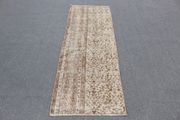Turkish Kilim Pillow, Kilim Cushion Sham, Outdoor Patio Pillow Case, Antique Pillows, Aesthetic Pillow Cover, 16"x16" Beige Pillow Cover
Office Chair Pillow, Kilim Pillow Cover, Home Decor Pillow, Turkish Kilim Pillow, Outdoor Throw Pillow, 16"x16" Blue Cushion Case
16"x16" Beige Cushion Case, Southwestern Pillow Sham, Kilim Pillow Cover, Turkish Pillow, Handmade Rug Seat Pillow Case, Vintage Pillow
Antique Pillows, Handmade Kilim Cushion, 16"x16" Blue Pillow Sham, Vintage Pillow Cover, Kilim Pillow Cover
Turkish Pillow, 16"x16" Green Pillow Cover, Christmas Cushion Case, Crochet Pattern Pillow Cover, Vintage Kilim Throw Pillow, Gift Pillow
Throw Kilim Pillow, Boho Pillow, One Of A Kind Cushion, Outdoor Throw Pillow Case, 16"x16" Beige Pillow Case, Gift Pillow
Decorative Throw Cushion Case, Boho Pillow, Vintage Kilim Throw Pillow, Interior Designer Pillow, 16"x16" Beige Pillow Case
Sofa Bolster Pillow Sham, Boho Pillow, Pillow for Couch, Living Room Throw Cushion, 16"x16" Beige Pillow, Turkish Kilim Pillow
Crochet Pattern Cushion, Bolster Pillow Case, 16"x16" Red Pillow Case, Kilim Pillow Cover, Kilim Pillow, Home Decor Pillow
16"x16" Blue Pillow Sham, Kilim Pillow, Decorative Pillow Case, Patio Pillow Sham, Kilim Cushion Sham, Boho Pillow Sham Cover
Meditation Pillow, Vintage Kilim Pillow, 16"x16" Beige Pillow Case, Handmade Kilim Cushion, Floor Cushion, Home Decor Pillow
Handmade Throw Pillow Sham, Pillow for Sofa, Ethnical Kilim Rug Pillow, Handmade Kilim Cushion, 16"x16" Red Pillow Case
Throw Kilim Pillow, Bohemian Cushion Cushion Case, Turkish Kilim Pillow, Gift Pillow, Colorful Cushion, 16"x16" Blue Pillow Cover
Boho Throw Cushion Case, Vintage Pillow, Handmade Kilim Cushion, 16"x16" Beige Pillow Cover, Vintage Kilim Throw Pillow, Muted Pillow Case
Turkish Bench Pillow, Pillow for Couch, Gift Pillow, Tribal Pillow Cover, 16"x16" Blue Pillow Sham, Vintage Kilim Pillow
Turkish Pillow, Turkish Kilim Pillow, 16"x16" Yellow Cushion Cover, Kilim Pillow, Rustic Cushion Cover, Outdoor Throw Pillow Cover
Kilim Cushion Sham, 16"x16" Blue Pillow Sham, Antique Pillows, Personalized Gift Pillow Pillow Case, Vintage Kilim Throw Pillow
Boho Pillow Sham Cover, Antique Pillows, Turkish Bench Cushion Cover, 16"x16" Beige Cushion, Ethnical Kilim Rug Pillow
Kilim Pillow, Handmade Rug Seat Pillow Cover, 16"x16" Orange Cushion Cover, Gift Pillow, Vintage Kilim Throw Pillow
Neutral Pillow Cover, Kilim Cushion Sham, Interior Designer Pillow, Wholesale Pillow, Boho Pillow Sham Cover, 16"x16" Green Cushion Cover
Oushak rugs, originating from the region of Usak in Western Turkey, are renowned for their unique charm, intricate designs, and historical significance. These rugs have been cherished for centuries, and their popularity continues to endure in the world of interior design. In this blog, we'll delve into what makes an Oushak rug special, its distinctive features, and why it remains a favorite among decorators and collectors alike.
Oushak rugs, also known as Ushak rugs, are a type of Turkish carpet that has a rich history dating back to the 15th century. The name "Oushak" comes from the region of Usak, which has been a center of rug weaving for centuries. Here are some key features that make Oushak rugs unique:
1. Design and Patterns
· Central Medallion: Many Oushak rug feature a central medallion design, which is a characteristic motif in traditional Turkish rugs.
· Floral Motifs: They often incorporate stylized floral patterns, including palmettes, tulips, and carnations, which are symbols of beauty and abundance.
· Geometric Elements: Oushak rugs may also include geometric patterns, although these are usually more subtle compared to other Turkish rug styles.
2. Colors and Dyes
· Soft Color Palette: Oushak rugs are known for their soft, muted color palette, which includes shades of beige, ivory, soft blues, and pale greens.
· Natural Dyes: Traditionally, Oushak rugs are dyed using natural substances such as roots, flowers, and insects, resulting in colors that are rich and harmonious.
3. Materials and Weaving Techniques
· Wool: Oushak rugs are predominantly made from high-quality wool, which is known for its durability and sheen.
· Hand-Knotted: They are hand-knotted using the Turkish or Ghiordes knot, a traditional technique that results in a dense pile and intricate patterns.
· Large Size: Oushak rugs are often larger in size compared to other Turkish rugs, making them ideal for covering large areas in homes and palaces.
4. History and Cultural Significance
· Royal Patronage: Oushak rugs were historically favored by Ottoman sultans and European aristocrats, and they were often commissioned for royal palaces and grand estates.
· Artistic Heritage: They represent the artistic heritage of Turkish craftsmen and their mastery of rug weaving techniques passed down through generations.
Why Choose an Oushak Rug?
· Oushak rugs have enduring appeal and are prized for several reasons:
· Timeless Elegance: They add a touch of timeless elegance and sophistication to any space, from traditional to contemporary interiors.
· Versatility: Oushak rugs blend seamlessly with various decor styles, including classic, eclectic, and modern designs.
· Investment Value: Antique Oushak rugs are highly sought after by collectors and often appreciate in value over time.
Ethnic Patterns of Rugs
Rugs with ethnic patterns are not just floor coverings; they are pieces of art that reflect the rich cultural heritage, traditions, and history of their makers. These patterns vary widely across different regions and ethnic groups, each telling a unique story and adding a distinctive charm to interior spaces. In this blog, we'll delve into the diverse ethnic patterns found in rugs from around the world, their meanings, and how they can enhance your home decor. Ethnic patterns in rugs offer a fascinating glimpse into the cultural heritage, traditions, and artistic expressions of diverse communities around the world. Whether you're drawn to the intricate geometric patterns of Moroccan rugs, the floral motifs of Persian rugs, or the tribal designs of Navajo rugs, each rug tells a story and adds a unique character to your home. Celebrate the beauty and cultural significance of ethnic patterned rugs in your home decor, and let these exquisite textiles enrich your living space with their history, craftsmanship, and timeless appeal. Embrace the diversity of ethnic patterns, and enjoy the warmth and character they bring to your home. You can buy products that suit your style from Kayrarug.
